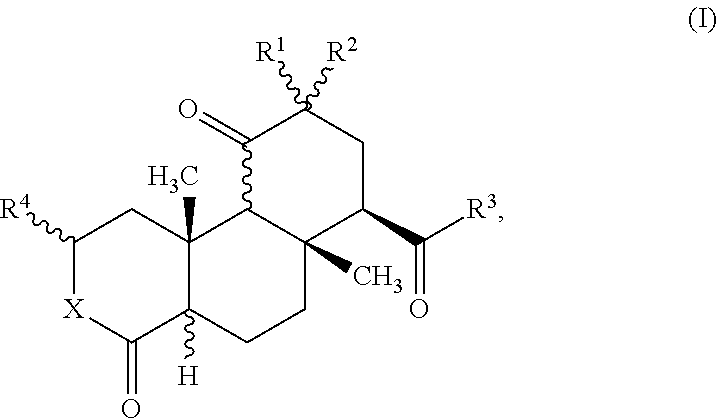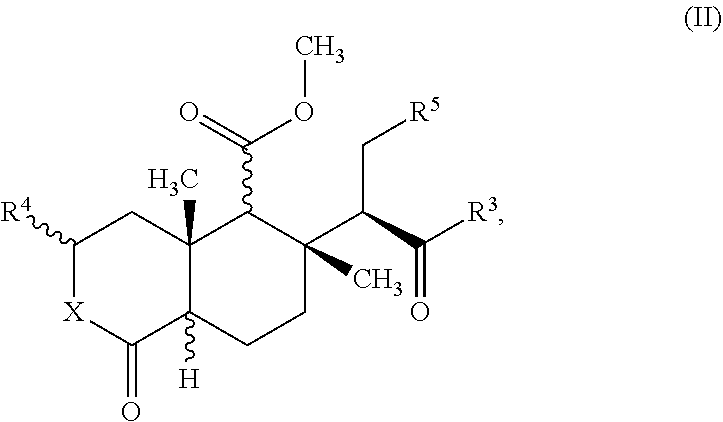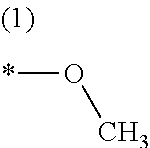Combination product for the induction and/or maintenance of general anesthesia
a combination product and anesthesia technology, applied in the field of new pharmaceutical combination products, can solve the problems of inability to aroused patients, lack of reliable, inhalation and intravenous anesthesia lack of pain-suppressing properties of most inhaled and intravenous anesthesia, etc., and achieve the effect of inducing general anesthesia
- Summary
- Abstract
- Description
- Claims
- Application Information
AI Technical Summary
Benefits of technology
Problems solved by technology
Method used
Image
Examples
example 1
Salvinorin A Administered Alone Intraperitoneally does not Induce General Anesthesia
[0119]Three male Sprague Dawley rats were used in this example. All three showed similar levels of spontaneous activity before the interventions described below. In order to test SA, two different solutions of SA in DMSO were prepared. The first at a concentration of 12 mg / ml and the second at 24 mg / ml.
[0120]Rat number 1 (weight 0.347 kg) served as control and received an intraperitoneal (i.p.) injection of 0.2 ml of DMSO vehicle. No changes in locomotor or exploratory activity that could suggest sedation were observed immediately after the injection. Sedation and the spontaneous righting reflex were assessed at 1, 2, 5, 10, 15, 20, 30 and 40 minutes after the injection. As described above, to assess the spontaneous righting reflex the rat is put on its back and the time taken until the animal stands again on its four limbs is measured. At all measurement points the rat resisted being turned on its b...
example 2
Salvinorin A Administered Alone Intravenously does not Induce General Anesthesia
[0124]Three male Sprague Dawley rats were used in this example. All three showed similar levels of spontaneous activity before the interventions described below. In order to test SA, two different solutions of SA in DMSO were prepared. The first at a concentration of 12 mg / ml and the second at 24 mg / ml. Vehicle and drug solutions were administered by intravenous injection (i.v.) in the tail, with the animal placed in a standard cylindrical restrainer. Prior to injection, the tail was submerged in warm (30-35° C.) water for 1-2 minutes until adequate dilation of the tail veins was achieved.
[0125]Rat number 1 (weight 0.333 kg) served as control and received an i.v. injection of 0.2 ml DMSO vehicle. No changes in locomotor or exploratory activity that could suggest sedation were observed immediately after the injection. Sedation and the spontaneous righting reflex were assessed at 1, 2, 5, 10, 15, 20, 30 an...
example 3
Salvinorin A Administered Intravenously in Combination with an Alpha-2-Adrenergic Agonist Induces Rapid and Dose-Dependent General Anesthesia
[0129]Three male Sprague Dawley rats were used in this example. All three showed similar levels of spontaneous activity before the interventions described below. In this example, SA was administered in association with an alpha-2-adrenergic agonist. Both drugs were injected intravenously (i.v.) in the tail. Medetomidine (CAS No. 86347-14-0) was the alpha-2-adrenergic agonist used. The i.v. injections of Medetomidine and SA were administered with the rat placed in a restrainer and following the same procedure described in Example 2. Rat number 1 received a single i.v. medetomidine injection. Rats number 2 and 3 received two consecutive i.v. injections. Different tail veins were used for the first (Medetomidine) and the second (SA) injections. The two injections were 20 minutes apart. A commercially available Medetomidine hydrochloride solution w...
PUM
| Property | Measurement | Unit |
|---|---|---|
| concentration | aaaaa | aaaaa |
| concentration | aaaaa | aaaaa |
| weight | aaaaa | aaaaa |
Abstract
Description
Claims
Application Information
 Login to View More
Login to View More - R&D
- Intellectual Property
- Life Sciences
- Materials
- Tech Scout
- Unparalleled Data Quality
- Higher Quality Content
- 60% Fewer Hallucinations
Browse by: Latest US Patents, China's latest patents, Technical Efficacy Thesaurus, Application Domain, Technology Topic, Popular Technical Reports.
© 2025 PatSnap. All rights reserved.Legal|Privacy policy|Modern Slavery Act Transparency Statement|Sitemap|About US| Contact US: help@patsnap.com



